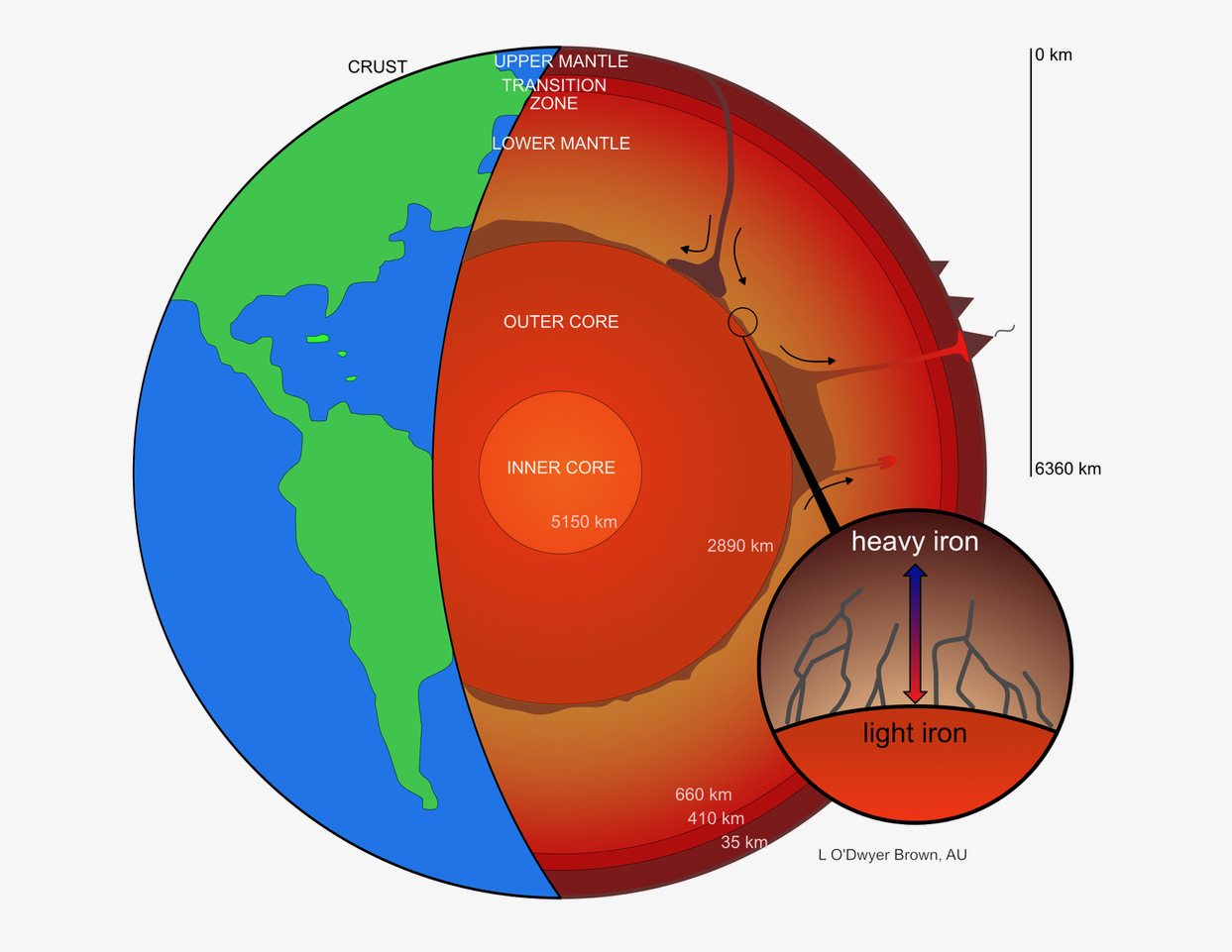Leaky core?
New article by ESP and collaborators on chemical and thermal transfer at the core-mantle boundary

The chief constituent of the core is iron. Iron can be used to trace the transfer of core material into the mantle and from there up to the surface. At the boundary between the core and the mantle, molten core material can percolate across the boundary into the lowermost mantle where it encounters a thin layer where temperature drops by more than a thousands degrees. Extraordinary chemical and isotopic fractionation can occur in this thermal boundary layer.
The new article by Lesher and team describes their high pressure, high temperature experiments that show as metallic iron from the core crosses into the lowermost boundary, it is exposed to huge temperature differences causing changes in chemistry. The slightly heavier iron isotopes migrate towards lower temperatures, away from the core, while the lighter iron isotopes move back down to the core. This effect is significant and systematic, and causes the core material infiltrating the lowermost mantle to be enriched in the heavy iron isotopes. Their computer simulations show that such fractionation of iron isotopes can develop over relatively short geologic time scales, and that the modified core material can be transported towards the Earth’s surface in hot ascending mantle plumes, where it can melt and erupt as lava. Lavas erupted at oceanic islands, such as Iceland and Hawaii, carry this characteristic signature that Lesher and team propose reflects a leaky core.
You can read the full article here.
